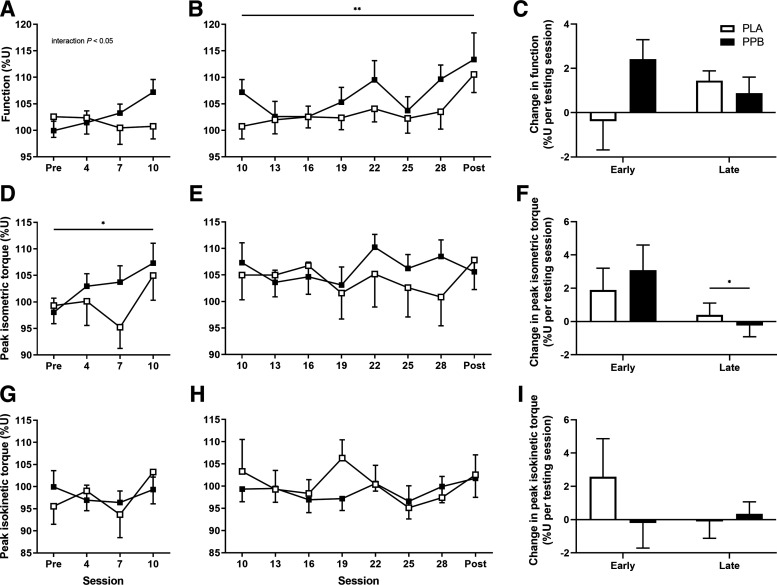Figure 3.
Knee extensor muscle function (A–C), peak isometric torque (D–F), and peak isokinetic torque (G–I) over early (sessions 1–10; left) and late (sessions 10–30; middle) periods of unilateral resistance-type exercise training, expressed relative to the untrained leg (%U). The right panels present a comparison of rate of improvement between early and late periods. Muscle function was defined as total work performed over 30 maximal, voluntary, isokinetic, concentric contractions. Peak isometric torque measured during 3 × 3 s maximal voluntary isometric contractions (MVC). Peak isokinetic torque was measured during three maximal, voluntary, isokinetic, concentric contractions. A postexercise and prebed protein-polyphenol (PPB; filled symbols; n = 15) or maltodextrin placebo (PLA; open symbols; n = 14) nutritional intervention was provided daily. Values are means ± SE. Statistical analysis performed with separate two-way ANOVA. Significant main effects of training denoted by *P < 0.05, **P < 0.01.

